Nothing is more frustrating than a tire blow-out, or a tire problem requiring an unplanned, early replacement of a new tire. When this happens, we often think the tire wasn’t strong enough or there is some sort of defect in the tire. Manufacturing defect, poor quality or faulty materials are rarely the causes of tire failure. 99% of the time, the causes of tire failure leading to a blow-out or pre-mature tire replacement was completely avoidable with a little more care and attention during routine maintenance or while driving.
One of the main causes of tire failure is under-inflation. Tires that are under-inflated flex more in the sidewall. Excessive flexing causes them to heat up far beyond normal operating temperatures. This problem is compounded when driving at highway speeds during hot weather for long periods of time. When the tire gets excessively hot, the rubber begins to degrade, which if driven on long enough, leads to a rupture in the sidewall of the tire, or tread separation.
The result is an immediate and rapid loss of air pressure, often accompanied by a loud bang as the tire explodes.
Under-inflated Tires
In addition to the sidewall splitting, the inner liner will usually have evidence that the tire was run at low air pressure before it exploded. When the tire has been removed from the wheel, look for small chunks of burnt looking rubber and dust that has come off the inner liner. If your tire looks like this, it is likely that tire manufacturers, and most extended tire warranty programs, will deny any claim for credit or free replacement.
Misalignment or worn suspension parts are another primary reason a tire does not wear evenly. The tire will be completely worn on one side, or in one area of the tire, but perfectly good, with plenty of tread on the other parts of the tire. The owner has no choice but to replace the tire. Even if only 10% of the tread is worn through, that area will be the weakest and the most susceptible to flats.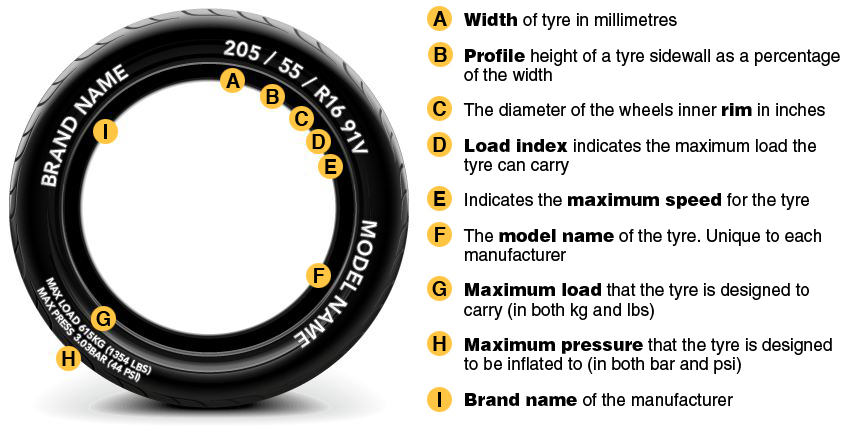 This condition also contributes to poor traction and ride quality.
This condition also contributes to poor traction and ride quality.
Mis-alignment
There are two tread wear patterns that indicate the type of mechanical problem. The most common is tire wear associated with wheel misalignment. In this situation, one or more of the wheel and tires are going down the road at an angle to the direction of travel, or with too much camber built into the wheel set up. In either case, rubber ends up wearing faster on one side of the tire compared to the other as shown in the photograph on the right. This tire has worn to the cords on one side, but still has plenty of rubber on the opposite shoulder. If the vehicle was aligned correctly, this tire would have worn evenly across the tread, and stayed on the vehicle for another 30,000 or 40,000 miles.
The second wear pattern that indicates a mechanical problem with the suspension of the vehicle is shown below on the left. Broken suspension parts, or worn out and loose bearings or bushings create a wobble in the wheel and tire. Over time the
Over time the
Cupping on the shoulder of the tire indicate a problem with your suspension
wobble in the wheel and tire manifests itself in the tire tread rubber, either as cupping on the shoulder tread blocks or as diagonal stripes of wear across the surface of the tread. These wear patterns indicate a serious suspension issue that needs to be addressed for safety reasons and for the sake of the tire tread-life.
While some tires may be slightly more resistant to irregular wear, overtime even the most expensive, premium tires will be replaced early compared to tires on a well maintained and correctly aligned vehicle. Any tire professional or service technician can identify wear patterns on a tire tread associated with mechanical issues. Similar to when tires are under-inflated, tires that exhibit these wear patterns will not be eligible for a free replacement or any sort of pro-rated credit towards a new tire.
Impact Break due to hitting a pothole or other road hazard
If you are driving down the road at 50 or 60 mph and hit a pot-hole, or run over an obstacle in the road, the tire takes the full brunt of the impact. If the impact is hard enough, the sidewall of the tire will compress and be squeezed between the object and the wheel flange. This “pinch-shock” can cause a chunk to come off the tire or a large crack to form on the sidewall where the cords have broken (see photo on left). This is a particularly common occurrence on low profile tires.
If the impact is hard enough, the sidewall of the tire will compress and be squeezed between the object and the wheel flange. This “pinch-shock” can cause a chunk to come off the tire or a large crack to form on the sidewall where the cords have broken (see photo on left). This is a particularly common occurrence on low profile tires.
Sidewall bulge from broken cords inside tire. While avoidable, road hazards are a fact of life for even the most diligent of drivers. The photo on the left is a tire that has broken internal cords on the sidewall, likely as the result of an impact. The impact broke the cords, but not hard enough to split or crack the rubber. If you see a bulge like this on any of your tires, it should be removed and replaced as soon as possible. If not replaced, the tire could eventually fail.
The best way to get the most mileage out of your tires and to avoid a blow-out is to ensure your vehicle is in good operating condition, check your tire air pressure regularly, and drive carefully to avoid road hazards.
Create an account for free on Tires-Easy.com and check out the discounted prices on a great selection of tires.
Sign Up
Tires can become damaged for a variety of reasons, and it can happen without the driver being immediately aware there's a problem. The most common types of damage are punctures, cuts, impacts, cracks, bulges and irregular wear. In this section, we'll explain the signs and symptoms to help you diagnose the issue, plus some useful tips on how to prevent them.
There are several types of irregular wear, the most typical variations being heel and toe wear, one-sided wear, and center wear. Here we explain how and why they occur.
a. Heel and toe wear
Heel and toe wear is a pattern caused by normal usage and suspension settings. It's the outwardly visible (and audible) manifestation of various distortional forces at work on the tread.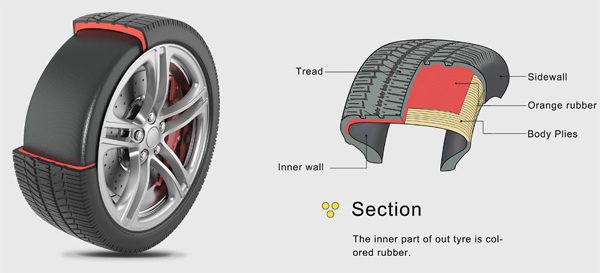 To explain further, let's dive a little deeper into the design of the tread.
To explain further, let's dive a little deeper into the design of the tread.
Tread grooves and sipes are essential in ensuring safety on wet and flooded roads. Particularly with low-profile tires, a higher percentage of tread void is necessary to take up the water and to improve protection against aquaplaning. Cross-grooves for water drainage take the form of freestanding blocks in the shoulder area. These shoulder blocks can wear into a heel and toe pattern as a result of rolling mechanisms under certain operating conditions.
These operating conditions include:
While the tire is rolling along the road, the freestanding blocks deform as they approach the contact patch of the tire, and they're compressed as they touch the tarmac. After they lose road contact, however, the blocks will snap back into their original shape, rubbing the surface as they do so.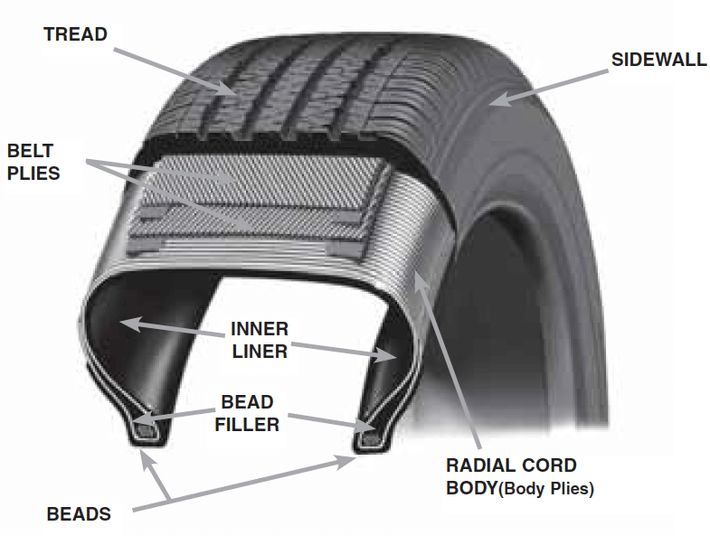 The result is a wear pattern on the block run-out edge, and it's more likely to appear on non-driven wheel positions.
The result is a wear pattern on the block run-out edge, and it's more likely to appear on non-driven wheel positions.
A minor amount of heel and toe pattern wear is reasonable and has no discernible effects on driving comfort. But if the wear is more extensive, more specific issues may be at fault. These can range from improper inflation, excessive toe-in, and low-wear applications.
b. Center wear
You can find this wear pattern on the driven wheels of highly motorized cars. During energetic acceleration, in stop-start urban traffic, or when accelerating away from traffic lights, these high torque levels can quickly increase wear of the tread center. Even today’s mid-range vehicles have modern engines which can generate high levels of torque and are capable of producing high degrees of slip.
c. One-sided wear
The single biggest reason for one-sided wear is because of axle geometry. Deviations can develop over time and are the result of, for example, aggressively mounting a curb.
Lowering the height of a vehicle in conjunction with low-profile tires can also affect wheel alignment. During driving, modified suspension arms tend to deviate the alignment of the wheels from the specified position. The problem can catch drivers unaware, because wheel alignment values can still be found to be within tolerance limits when measured in a static position on an axle measurement bench. But the manufacturer’s alignment data applies to vehicles as delivered and may not necessarily apply to customized cars. Thus, the result may be an increase in non-uniform treadwear.
If a vehicle’s wheels are misaligned, a qualified specialist can correct the deviation by re-aligning the wheels.
An impact break is damage inflicted on the carcass (the casing of the tire) after the tire comes into contact with certain obstacles. A pronounced bulge on the sidewall of the tire indicates destroyed cords inside the carcass.
Damage of this kind is usually caused by driving over objects – like curbs or speed bumps – at excessive speed or the wrong angle.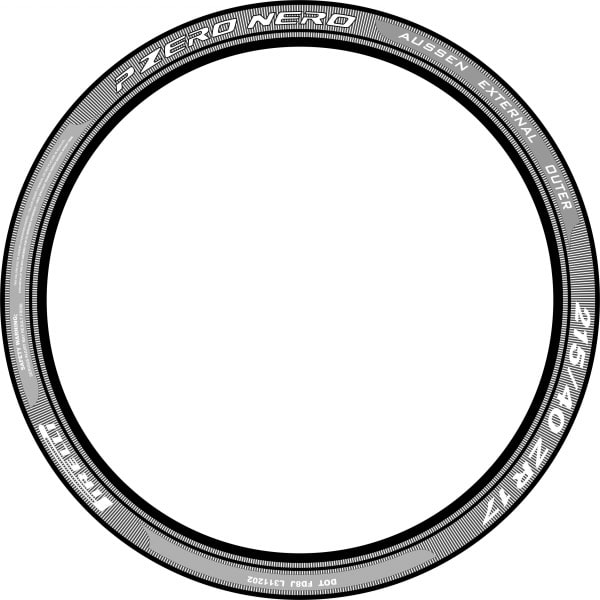 Overstressing the carcass causes individual cords to break. The exact extent of the damage will depend on the speed and angle of impact, and the size of the obstacle. Careful motorists are usually able to avoid this type of damage, unless an obstacle suddenly appears in front of a vehicle and they can't steer around it.
Overstressing the carcass causes individual cords to break. The exact extent of the damage will depend on the speed and angle of impact, and the size of the obstacle. Careful motorists are usually able to avoid this type of damage, unless an obstacle suddenly appears in front of a vehicle and they can't steer around it.
Ignoring such damage increases the risk of tire failure at some point in the future, either delamination of the tread and plies or disintegration of the tire sidewall.
An impact break is sometimes confused with a sidewall indentation, but they are not the same thing. As we explain below, dimples or indentations in the sidewall are not a cause for alarm.
A tire sidewall is not always perfectly even; sometimes there will be dimples and indentations and may require a more detailed inspection to determine the causes. The essential thing to know is that indentations are harmless and aren't detrimental either to driving or safety characteristics.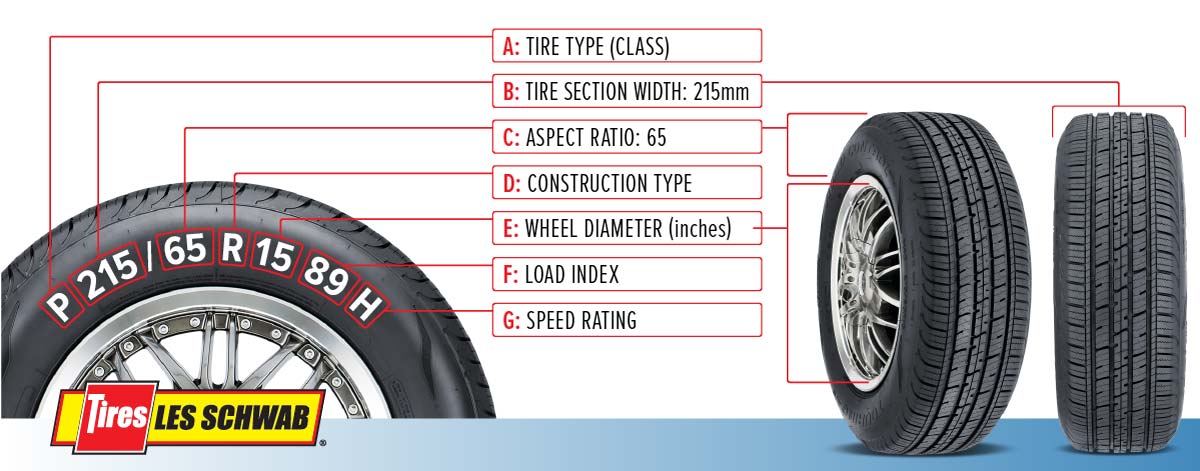 The dimples are superficial.
The dimples are superficial.
Indentations in the tire are best illustrated if you were to imagine tying a string around an inflated balloon and then gently pulling the string tighter. If the balloon is the tire, the string is the embedded carcass cords which are concealed by the rubber. These cords provide the tire with its strength and stability, and transfer steering and braking forces while driving.
During manufacture of a tire – or rather when constructing the carcass, to which the steel belt and the tread are attached – there are often one or two overlaps in the carcass. It's this overlap which is sometimes visible as an indentation after the tire is fitted and inflated.
But if you're in any doubt, have the sidewall indentations checked by a qualified tire specialist.
Cuts are the result of external influences like bad road conditions, protruding bodywork parts, or sharp, foreign objects such as stones or glass. If you discover damage in the form of a cut on the tire surface, you should visit your local tire dealer and have your tires immediately checked by an expert.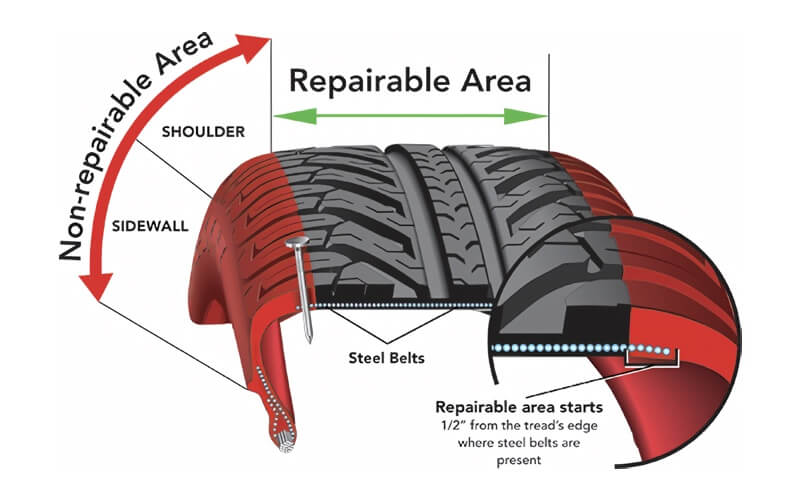
Punctures are the consequence of sharp objects on the road – for example, nails, screws, or broken glass – which pierce through the surface of the tire. If the puncture is deep enough, the tire could begin to lose air pressure. If you find that one or more of your tires are continuously losing pressure, or if you discover a nail or screw embedded in the tread, then visit your local tire specialist as soon as possible to have them repaired.
Change the position of the tires on the car at regular intervals (unless otherwise recommended by the vehicle manufacturer) to promote even tire wear. The position of the tires should be rotated, for example, when making the seasonal transition from summer to winter tires.
By rotating the wheels from the powered to the non-powered axle on a regular basis, drivers can expect to have a uniform pattern of wear on their tires. But as always, please observe the recommendations provided by the vehicle manufacturer.
If you find yourself in a situation where you have to drive over an obstacle in the road, approach it slowly and as close to the perpendicular as possible. Afterward, check your tires for exterior damage such as cuts, cracks or bulges. Also, avoid driving aggressively on unpaved roads.
Dealer Locator
90,000 here are you yourself (and you can’t) - the magazine for the wheel ofLADA
UAZ
KIA
Hyundai
Renault
Toyota
Volkswagen
Skoda
Nissan
BM -Benz
Mitsubishi
Mazda
Ford
All brands
Most often, we ourselves are to blame for the fact that tires become unusable. But this can be avoided.
Related materials
You have never seen such tires: even the police were surprised
In the process of using a tire, a variety of damages can occur, most of which are the fault of the driver. As a result, rubber is wasted, and since the law prohibits the use of different tire models on the same axle, you have to spend money on replacing the second tire.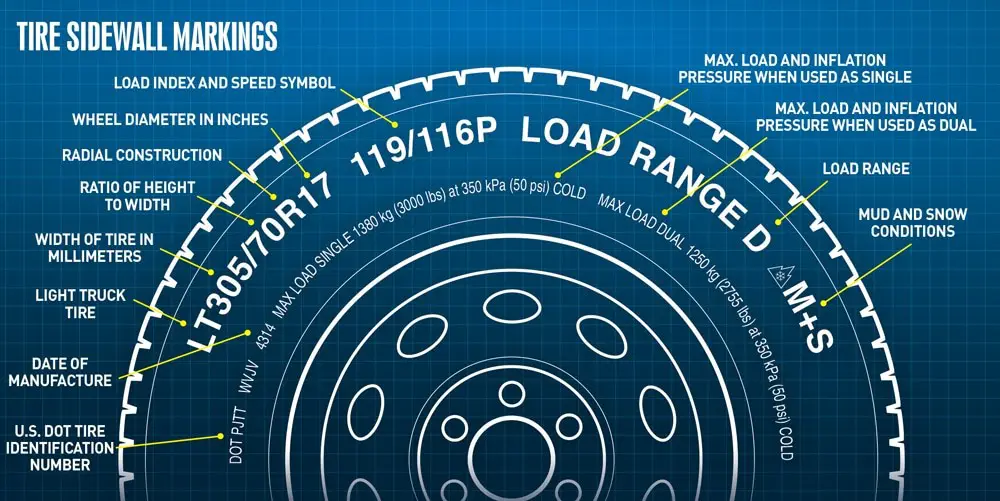
The most common damage is puncture . This is the most harmless type of damage, but only if you notice it in time and repair it right away. It is absolutely impossible to drive on a flat tire, even a couple of meters! The damage caused by running on a flat tire or with low pressure is catastrophic. This causes the sidewalls to deform more than they should, which causes the tire to overheat, delaminate, and the carcass becomes unusable due to broken cords. As a result, the tire will have to be thrown away. In addition, the edge of the rim can also be damaged. nine0003
Punctures are of two types: with and without cord damage. To determine this, it is necessary to remove what pierced it. If the edges of the puncture tightly converge, then the cord is not damaged and it will be possible to repair the tire without removing it from the disk. Otherwise, if the edges do not converge, you will have to disassemble the wheel and make repairs with strengthening the frame from the inside. Alternatively, in the field and in the absence of a spare wheel, such a puncture can be repaired without removing the tire from the rim, after which you can carefully drive to a tire fitting or garage and make a full repair. nine0003
Alternatively, in the field and in the absence of a spare wheel, such a puncture can be repaired without removing the tire from the rim, after which you can carefully drive to a tire fitting or garage and make a full repair. nine0003
Related materials
Is it possible to pump up a wheel without a compressor - the experiment "Behind the wheel"
When repairing, the puncture site should be cleaned and marked. Further, it all depends on what kind of repair kit you have - as a rule, instructions are attached to them. There are sealants that are poured into the tire through the nipple, after which the wheel turns with the puncture down and the substance seals the hole. Repair using a tourniquet or insert is somewhat more complicated, but also more durable: the edges of the hole are polished with a special tool, after which the tourniquet treated with a special compound must be inserted into the tire through a puncture with a special awl, pulled out (not completely) out and cut flush with the surface.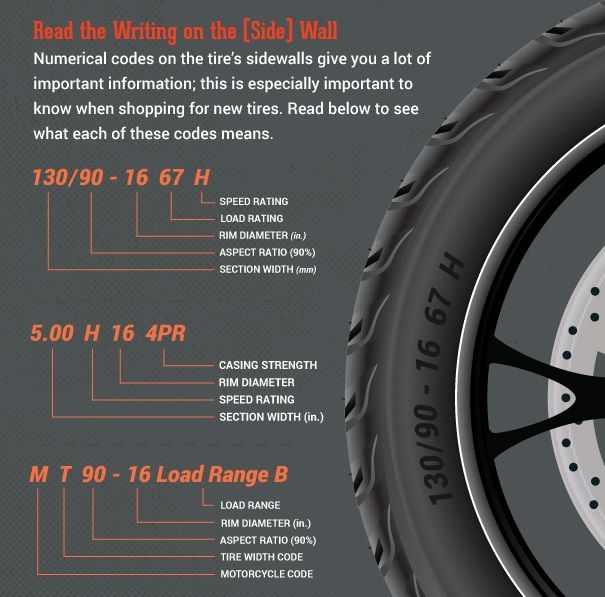 nine0003
nine0003
In case of damage to the cord due to a puncture, the tire must be removed from the rim in order to install a reinforced patch with an additional cord on its inner surface. One of the sides of such patches has an adhesive layer that promotes cold vulcanization. After such a repair, wheel balancing will be required. To seal punctures from the inside, patches in the form of a mushroom are also used, with a leg that goes into the puncture. Such patches are also covered with a special adhesive for cold vulcanization. nine0003
Cuts or holes , unlike punctures, are not repairable, as they violate the integrity of the frame, which can no longer be strengthened. In addition, breakdowns are always sudden and occur on the go: the tire abruptly loses pressure and before the car comes to a complete stop it has time to make several revolutions “on the rims”, which breaks the cord and destroys the layers. It is not recommended to use such a weakened tire, even if it was possible to repair and strengthen the place of the rupture or cut, in the future.
Related materials
8 tire storage rules - do you follow them all?
Incorrect storage of tires can cause cracks . The danger of such damage is that moisture enters the cord through cracks, which renders the frame unusable. In addition, air can escape through cracks. Unfortunately, cracks are not repairable, and tires with them will not last long: sooner or later they will deform, become covered with swellings due to rusted and torn cord or because of driving with pressure below the recommended one. nine0003
Blisters or bulges can appear on a tire for a variety of reasons - it always happens due to a broken cord or delamination in the carcass. In the first case, an obstacle was hit and the impact broke the cord or the cord was cut through with a sharp object. In the second case, there is no damage on or near the hernia, which means that it appeared either due to a factory defect, or due to frequent driving with pressure below the recommended one. The danger of hernias is that they can explode at any moment and provoke a skid, which will lead to an accident. If there is nothing to replace a tire with a hernia, then it is better to rearrange it to the rear axle and drive very carefully. Like cracks, a hernia cannot be repaired. Sometimes small blisters resulting from impacts or cuts are reinforced with reinforced patches, but there is no guarantee that the tire will not explode. Therefore, tires with hernias are recommended to be replaced immediately. nine0003
The danger of hernias is that they can explode at any moment and provoke a skid, which will lead to an accident. If there is nothing to replace a tire with a hernia, then it is better to rearrange it to the rear axle and drive very carefully. Like cracks, a hernia cannot be repaired. Sometimes small blisters resulting from impacts or cuts are reinforced with reinforced patches, but there is no guarantee that the tire will not explode. Therefore, tires with hernias are recommended to be replaced immediately. nine0003
Related materials
Tire blackening - 6 ways to polish. Inexpensive!
Tire sidewalls can be damaged by rubbing against curbs or the asphalt edge when pulling over. If you are prone to such a driving style, then it is recommended to inspect the inner and outer sidewalls from time to time and, if abrasion is found, swap the wheels in order to prevent the cord from being exposed - the rubber thickness on the sidewalls is small (1. 5–3 mm), and it can be rubbed to the frame very quickly. nine0003
5–3 mm), and it can be rubbed to the frame very quickly. nine0003
Often the cause of tire damage can be poor-quality tire fitting , during which the bead ring was damaged. In this case, the tire loses its geometry and “sits” crookedly on the disk - it writes out “eights” during rotation, and lateral vibration appears during the ride. It is impossible to repair such a tire - you need to replace it with a serviceable one as soon as possible before it damages the suspension: rods, hubs and bearings.
You can find out whether you are using tires correctly and what invisible damage they have received by the characteristic wear of the tread, the varieties of which are collected in the table for convenience:
Double side shoulder wear
Driving with lower than recommended tire pressure.
Inflate the tires to the pressure recommended by the automaker (a plate with recommendations is attached in the driver's door opening) and find the cause of the fall: puncture, cracks, hernia, nipple, rust on the disc rim in the place where the tire fits, etc.
Center wear
Tire pressure too high.
Reduce the pressure to the recommended (indicated on the tablet in the driver's doorway)
In the form of rings and furrows
can be found on trailers or rear wheels of pickups and vans due to vibrations and vibrations and vibrations due to vibrations and vibrations bouncing at high speeds.
Changing wheels on a loaded axle to equalize wear, driving with a heavier load. nine0003
Chipped wear with cuts
Frequent wheel spin on rocky surfaces.
Move the wheels to a non-driving axle, use the gas pedal more carefully when starting to move.
Photo: Petr Urbanek / Unsplash
Our new video
Sollers Argo and Atlant from Yelabuga: the Chinese couldn't do without
Test of Haval Dargo and Mitsubishi Outlander (video)
The story stopped on it: test of the last Volga
Like this post? Subscribe and you will always be in the know!
Driving in Zen
News smi2. ru
ru
In addition to the standard wheel puncture (tread cut), sidewall damage also occurs. Such damage is much more dangerous, since there is a high risk of exploding the wheel and losing control of the car. In addition, not every car service will undertake the repair of lateral tire damage. nine0220
What causes tire side cuts?
The sidewall can be damaged both by bad roads and by intruders. In any case, the wheel loses its rigidity and its bearing part is deformed. A weakened section with frequent travel over bumps can eventually either break through or turn into a “hernia” (bump) and over time will also lead to a wheel break. Signs of damage to the side of the tire are a violation of the smoothness of the ride (even on a flat road, shocks and shaking are felt in the direction of the car) and drift to the side. nine0003
However, there is a worse situation - the formation of a through hole in the sidewall. In this case, the pressure in the wheel drops very quickly and the operation of the machine with such a tire is not possible - only after repair.
What should I do if a tire is pierced through in its sidewall?
Restoration of the integrity of the tire is possible through the so-called vulcanization. It can be:
It is the latter method that gives good results and reliability. It is worth noting that it is unlikely that it will be possible to carry out the vulcanization procedure on your own or on your own. To do this, you will need to contact the services of a car service, but even here there is no guarantee that the wheel will be taken for repair. nine0003
The fact is that the work requires highly qualified specialists and, most importantly, special equipment, which, alas, few technical centers have in their use.
Not every damaged wheel needs to be repaired in a workshop. Masters do not undertake to restore tires with:

Tire vulcanization takes several hours, even if professionals are involved in the job. The vulcanization itself consists of several steps:
 nine0196
nine0196 This method can be practiced on its own. As a rule, they are used on a long journey - when the nearest tire service is far away, and the tire requires immediate repair. An ordinary tourniquet acts as a vulcanization tool. It can be purchased both separately and as part of a repair kit (cars without a spare wheel are factory-equipped with a repair kit). nine0003
The main task of the tourniquet is to repair cuts (straight cuts) on the main part of the tire, but side cuts can also be repaired, provided they are small.
Restoration work is carried out as follows:
